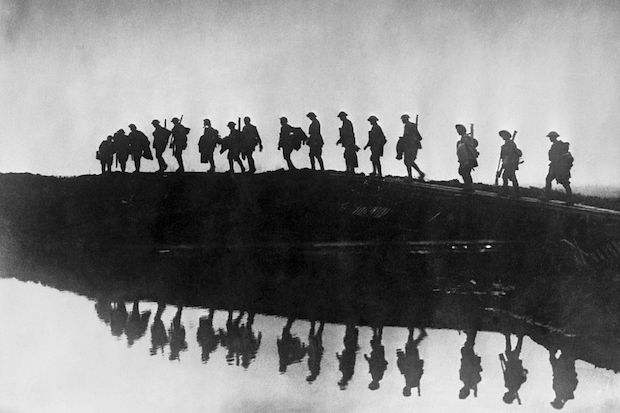In this centenary year of the Somme, it is refreshing to read a book about the Great War that is not yet another dreary recital of the tragic and over-familiar facts, but successfully gets to grips with the dilemmas facing the commanders and politicians mediating the gargantuan conflict.
Historical debate about the war now boils down to two views. Either the conflict was conducted by bone-headed generals guzzling champagne in their chateaux while sending a generation to certain death against chattering machine guns and impenetrable barbed wire. Or the said generals have been much maligned, and eventually achieved a stunning victory after intelligently using tactics learned in a very hard but sadly necessary school of battles.
The former view is the one held by the overwhelming majority of those brought up on Oh, What a Lovely War!, Black-adder Goes Forth and the poetry of Wilfred Owen and Siegfried Sassoon. The latter is insistently, but vainly, argued by a young generation of military historians determined to defend the reputation of the generals, particularly that of the one regarded by his critics as Bonehead-in-Chief, Field Marshal Sir Douglas Haig.
Allan Mallinson, a professional soldier turned historian and novelist, is well placed to consider both arguments. In this trenchant, thoughtful study, informed by a reading of sources well beyond the reach of most of our contemporary military historians, he argues cogently that the war was simply too great — too complex, too brutal (in a word too modern) to be adequately understood and run by Britain’s antique military-political caste.
So it came about that after the trench lines had stabilised, for three awful years — 1915, 1916 and 1917 — the High Command’s only answer to the question posed by the German occupation of French and Flemish soil was the repetition of ever bloodier and more fruitless frontal offensives. The litany of names tolls like a passing bell: Neuve Chapelle, Aubers Ridge, Festubert, Loos, Fromelles, the Somme, Arras, Passchendaele — a furnace of futility that shrivelled the flower of the nation.
Mallinson quotes General Mangin, the hard-nosed French warrior particularly generous with his men’s blood and consequently known to them as ‘le boucher’: ‘Quoi qu’on fasse, on perd beaucoup de monde.’ (‘Whatever one does, one loses a lot of men.’) That, in essence, is the apologia of Haig’s defenders. The Germans had to be beaten on the Western Front, and the only way to do so was to kick them out by main force, which inevitably meant paying a very high butcher’s bill.
Einstein’s classic definition of insanity is to do the same thing over and over again and expect a different outcome. So, asks Mallinson, was there a different and saner way to win the war than the repetition of failed frontal assaults? He argues that stronger and wiser political control of the war — such as that exercised by Churchill in 1940 — could have restrained a High Command too profligate with human life.
Some generals, such as Plumer, did possess imagination, and used tactics that, properly applied, could have triumphed even in the unpromising terrain of the trenches. The simultaneous detonation of a score of giant mines at Messines in June 1917, for example, or the first mass use of tanks at Cambrai in an attack later the same year, brought temporary local victories that, properly exploited, might have achieved the elusive breakthrough.
But Mallinson is no Westerner. Like his hero Churchill, he tries to divert eyes from the bloody fields of Flanders and seek a strategy to win by kicking in a back door rather than battering away at the seemingly impregnable front gates. Gallipoli failed disastrously — but what about Italy, or the neglected Salonica front?
In the end, of course, a combination of circumstances — the Royal Navy blockade that strangled the German economy; America’s arrival on the scene and the consequent collapse in German morale — finally brought victory. But, Mallinson suggests, the price was too high, and we are still paying the bill a century on.






Comments